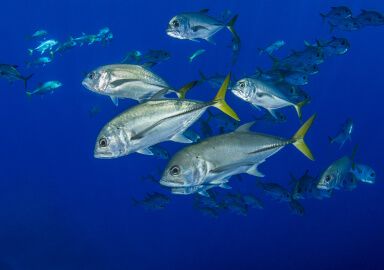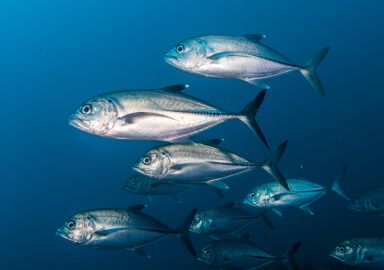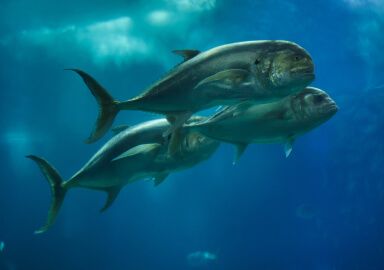Almaco Jack
Almaco jack are an open water fish predator of much of the world’s oceanic areas and a prime sport angling species due to their stamina and strength.
View 11 listings
11
listings
–
price starting from
7
countries
–
to the nearest trip
Where and When?
Almaco jack have a large and complex distribution in many areas of the world but are often uncommon or only locally abundant. They are found in many areas of the Indian, Pacific and Atlantic Oceans. Sport fishing is carried out around Australia, South Africa and parts of both seaboards of North America. In the western seaboard of the Americas they occur from California southwards to Peru and, in the east, from Cape Cod to northern Argentina. While juvenile fish can be found fairly close inshore, the larger fish are usually offshore and sometimes at great depths. The depth range has been given as 5 to 245 meters (803 ft.) while oceanic fish often swim either fairly high in the water column at 5-35 meters (16-115 ft.) or very close to the bottom.
Some fish are reported to congregate around wrecks and reefs while others seem to live nomadic lives endlessly patrolling the oceans in search of prey or for spawning. The almaco jack is believed to be feeding throughout the day and night and also in all the seasons and so fishing can be carried out anywhere and anytime within their natural range.
About Almaco Jack
The almaco jack, or longfin yellowtail (Seriola rivoliana), belongs to the same family as the jack, trevally, and amberjack. The dorsal and anal fins are elongate, hence the yellowtail name, and it is “stouter” than most family members. Its body has been described as “football shaped”. They are darkish brown/blue above and the fins and body become lighter in colour down the sides. There are often amber or olive stripes down the sides. This species is found in many areas and depths and the sizes often vary with the locality. Deep-water fish tend to be larger and these have been recorded up to 1.6 meters ( 63in.) in length with a mass of 60 kilograms (132 lbs.) but most large fish are about 0.9 meters (35in.) and 4 kilograms (10 lbs.).
Almaco jacks are mostly fish predators but will also take squid and shrimps. They are usually an open water fish but are often found close to the seabed. Typically solitary, almaco jacks sometimes congregate close to slopes, reefs or shoals of baitfish. They are reported to spawn throughout the year and, while smaller fish are generally found close inshore, the really large fish are usually offshore and deep down.
How to Catch?
Although almaco jack sometimes come close inshore, almost all targeted fishing is by boat and often far from shore. While they are widely distributed there are a limited number of areas where they can be easily and successfully targeted, and so local knowledge is important to increase chances of success. Very often almaco jack are caught by anglers chasing amberjack and similar species in deep water using heavy tackle. On the other hand, due to its stamina and strength - as a result of its continually moving lifestyle, the species is a popular sport angling target to some anglers.
Smaller almaco jack can be successfully targeted using light spinning tackle from small boats by quickly retrieving lures near the surface. Larger specimens can be caught using heavy tackle and by sending jigs, spoons or bait down to depths of around 100 meters (328 ft.). In areas such as Florida almaco jack are “unregulated” and either two fish or 100 lbs of fish may be kept per person daily.









